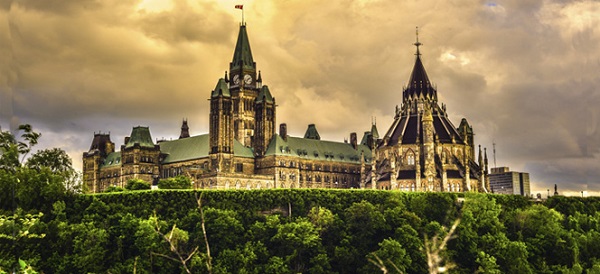Business
Federal government seems committed to killing investment in Canada

From the Fraser Institute
Business investment in the extraction sector (again, excluding residential structures and adjusted for inflation) has declined from $101.9 billion to $49.7 billion, a reduction of 51.2 per cent
Canada has a business investment problem, and it’s serious. Total business investment (inflation-adjusted, excluding residential construction) declined by 7.3 per cent between 2014 and 2022. The decline in business investment in the extractive sector (mining, quarrying, oil and gas) is even more pronounced.
During that period, business investment in the extraction sector (again, excluding residential structures and adjusted for inflation) has declined from $101.9 billion to $49.7 billion, a reduction of 51.2 per cent. In fact, from 2014 to 2022, declines in the extraction sector are larger than the total decline in overall non-residential business investment.
That’s very bad. Now why is this happening?
One factor is the heavy regulatory burden imposed on Canadian business, particularly in the extraction sector. How do we know that proliferating regulations, and concerns over regulatory uncertainty, deter investment in the mining, quarrying and oil and gas sectors? Because senior executives in these industries tell us virtually every year in a survey, which helps us understand the investment attractiveness of jurisdictions across Canada.
And Canada has seen an onslaught of investment-repelling regulations over the past decade, particularly in the oil and gas sector. For example, the Trudeau government in 2019 gave us Bill C-69, also known as the “no new pipelines” bill, which amended and introduced federal acts to overhaul the governmental review process for approving major infrastructure projects. The changes were heavily criticized for prolonging the already lengthy approval process, increasing uncertainty, and further politicizing the process.
In 2019, Ottawa also gave us Bill C-48, the “no tankers” bill, which changed regulations for vessels transporting oil to and from ports on British Columbia’s northern coast, effectively banning such shipments and thus limiting the ability of Canadian firms to export. More recently, the government has introduced a hard cap on greenhouse gas emissions coming from the oil and gas sector, and new fuel regulations that will drive up fuel costs.
And last year, with limited consultation with industry or the provinces, the Trudeau government announced major new regulations for methane emissions in the oil and gas sector, which will almost inevitably raise costs and curtail production.
Clearly, Canada badly needs regulatory reform to stem the flood of ever more onerous new regulations on our businesses, to trim back gratuitous regulations from previous generations of regulators, and lower the regulatory burden that has Canada’s economy labouring.
One approach to regulatory reform could be to impose “regulatory cap and trade” on regulators. This approach would establish a declining cap on the number of regulations that government can promulgate each year, with a requirement that new regulations be “traded” for existing regulations that impose similar economic burdens on the regulated community. Regulatory cap-and-trade of this sort showed success at paring regulations in a 2001 regulatory reform effort in B.C.
The urgency of regulatory reform in Canada can only be heightened by the recent United States Supreme Court decision to overturn what was called “Chevron Deference,” which gave regulators powers to regulate well beyond the express intent of Congressional legislation. Removing Chevron Deterrence will likely send a lot of U.S. regulations back to the drawing board, as lawsuits pour in challenging their legitimacy. This will impose regulatory reform in and of itself, and will likely make the U.S. regulatory system even more competitive than Canada.
If policymakers want to make Canada more competitive and unshackle our economy, they must cut the red tape, and quickly.
Author:
2025 Federal Election
Alcohol tax and MP pay hike tomorrow (April 1)

The Canadian Taxpayers Federation is calling on all party leaders to stop a pair of bad policies that are scheduled to happen automatically on April 1: pay raises for members Parliament and another alcohol tax increase.
“Party leaders owe taxpayers answers to these two questions: Why do you think you deserve a pay raise and why should Canadians pay higher taxes on beer and wine?” said Franco Terrazzano, CTF Federal Director. “Politicians don’t deserve a raise while millions of Canadians are struggling.
“And the last thing Canadians need is another tax hike when they pour a cold one or uncork a bottle with that special someone.”
MPs give themselves pay raises each year on April 1, based on the average annual increase in union contracts with corporations with 500 or more employees.
The CTF estimates tomorrow’s pay raise will amount to an extra $6,200 for backbench MPs, $9,200 for ministers and $12,400 for the prime minister, based on contract data published by the federal government.
After tomorrow’s pay raise, backbench MPs will receive a $209,300 annual salary, according to CTF estimates. A minister will collect $309,100 and the prime minister will take home $418,600.
Meanwhile, the alcohol escalator automatically increases excise taxes on beer, wine and spirits every year on April 1, without a vote in Parliament. Alcohol taxes will increase by two per cent tomorrow, costing taxpayers about $40 million this year, according to Beer Canada estimates.
The alcohol escalator tax has cost taxpayers more than $900 million since it was imposed in 2017, according to Beer Canada estimates.
“Politicians are padding their pockets on the same day they’re raising beer taxes and that’s wrong,” Terrazzano said. “If party leaders want to prove they care about taxpayers, they should stop the MP pay raises.
“And if party leaders care about giving Canadian brewers, distillers and wineries a fighting chance against tariffs, it’s time to stop hitting them with alcohol tax hikes year after year.”
The CTF released Leger polling showing 79 per cent of Canadians oppose tomorrow’s MP pay raise.
2025 Federal Election
Poilievre To Create ‘Canada First’ National Energy Corridor

From Conservative Party Communications
Poilievre will create the ‘Canada First’ National Energy Corridor to rapidly approve & build the infrastructure we need to end our energy dependence on America so we can stand up to Trump from a position of strength.
Conservative Leader Pierre Poilievre announced today he will create a ‘Canada First’ National Energy Corridor to fast-track approvals for transmission lines, railways, pipelines, and other critical infrastructure across Canada in a pre-approved transport corridor entirely within Canada, transporting our resources within Canada and to the world while bypassing the United States. It will bring billions of dollars of new investment into Canada’s economy, create powerful paycheques for Canadian workers, and restore our economic independence.
“After the Lost Liberal decade, Canada is poorer, weaker, and more dependent on the United States than ever before,” said Poilievre. “My ‘Canada First National Energy Corridor’ will enable us to quickly build the infrastructure we need to strengthen our country so we can stand on our own two feet and stand up to the Americans.”
In the corridor, all levels of government will provide legally binding commitments to approve projects. This means investors will no longer face the endless regulatory limbo that has made Canadians poorer. First Nations will be involved from the outset, ensuring that economic benefits flow directly to them and that their approval is secured before any money is spent.
Between 2015 and 2020, Canada cancelled 16 major energy projects, resulting in a $176 billion hit to our economy. The Liberals killed the Energy East pipeline and passed Bill C-69, the “No-New-Pipelines” law, which makes it all but impossible to build the pipelines and energy infrastructure we need to strengthen the Canadian economy. And now, the PBO projects that the ‘Carney cap’ on Canadian energy will reduce oil and gas production by nearly 5%, slash GDP by $20.5 billion annually, and eliminate 54,400 full-time jobs by 2032. An average mine opening lead time is now nearly 18 years—23% longer than Australia and 38% longer than the US. As a result of the Lost Liberal Decade, Canada now ranks 23rd in the World Bank’s Ease of Doing Business Index for 2024, a seven-place drop since 2015.
“In 2024, Canada exported 98% of its crude oil to the United States. This leaves us too dependent on the Americans,” said Poilievre. “Our Canada First National Energy Corridor will get us out from under America’s thumb and enable us to build the infrastructure we need to sell our natural resources to new markets, bring home jobs and dollars, and make us sovereign and self-reliant to stand up to Trump from a position of strength.”
Mark Carney’s economic advice to Justin Trudeau made Canada weaker while he and his rich friends made out like bandits. While he advised Trudeau to cancel Canadian energy projects, his own company spent billions on pipelines in South America and the Middle East. And unlike our competitors Australia and America, which work with builders to get projects approved, Mark Carney and Steven Guilbeault’s radical “keep-it-in-the-ground” ideology has blocked development, killed jobs, and left Canada dependent on foreign imports.
“The choice is clear: a fourth Liberal term that will keep our resources in the ground and keep us weak and vulnerable to Trump’s threats, or a strong new Conservative government that will approve projects, build an economic fortress, bring jobs and dollars home, and put Canada First—For a Change.”
-

 Business1 day ago
Business1 day agoDOGE discovered $330M in Small Business loans awarded to children under 11
-

 COVID-191 day ago
COVID-191 day ago17-year-old died after taking COVID shot, but Ontario judge denies his family’s liability claim
-

 2025 Federal Election1 day ago
2025 Federal Election1 day agoThe High Cost Of Continued Western Canadian Alienation
-

 Daily Caller1 day ago
Daily Caller1 day agoCover up of a Department of Energy Study Might Be The Biggest Stain On Biden Admin’s Legacy
-

 2025 Federal Election1 day ago
2025 Federal Election1 day ago2025 Federal Election Interference from China! Carney Pressed to Remove Liberal MP Over CCP Bounty Remark
-

 2025 Federal Election1 day ago
2025 Federal Election1 day ago2025 Election Interference – CCP Bounty on Conservative Candidate – Carney Says Nothing
-

 Business2 days ago
Business2 days agoCuba has lost 24% of it’s population to emigration in the last 4 years
-

 2025 Federal Election1 day ago
2025 Federal Election1 day agoPoilievre on 2025 Election Interference – Carney sill hasn’t fired Liberal MP in Chinese election interference scandal







